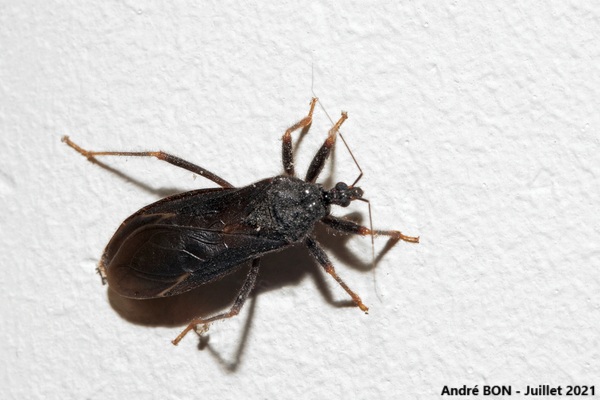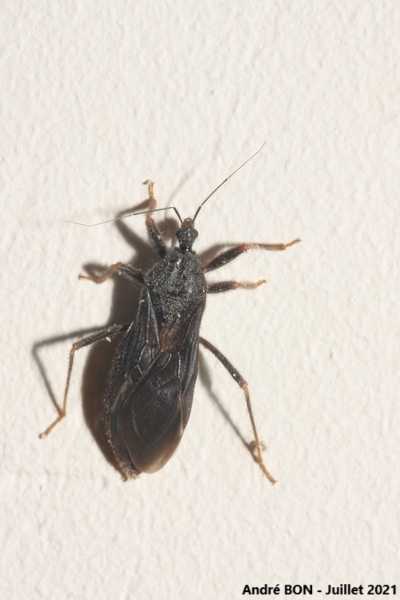

| Masked Hunter (Reduvius personatus (Linnaeus, 1758)) |


|
|
Scientific name: Reduvius personatus (Linnaeus, 1758) Common name: Masked Hunter French name: Réduve masqué Order: Heteroptera Family: Reduviidae Wingspan : 17 to 22 mm. Biotope: Human dwellings and warehouses but also outdoors in dry environments. Geographic area: Native to Europe and Western Asia, the Masked Hunter has been introduced to many regions including North America, Australia, South Africa, India, etc. Observation period : May to September. |
Adult Masked Hunters have an elongated body that is very dark brown to black in colour and very slightly shiny. The small ovoid head is separated from the body by a well-marked neck. The prominent eyes are placed on each side. The thorax is slightly darker and shinier than the rest of the body. It has two small bumps on the dorsal surface. The hind legs are significantly longer than the others. The nymphs cover themselves with dust to camouflage themselves with a sticky secretion. The Masked Hunter is nocturnal. It feeds on other arthropods. Its sting is painful but very rare. It is not an aggressive insect and is not very common to see. |
| [To know more about the Masked Hunter] [Next picture] [Top] |

|
Now that I've read up on the Masked Hunter I'll see if I can find a dust-covered nymph. |
| [To know more about the Masked Hunter] [Previous picture] [Top] |

|
The head appears really small compared to the rest of the body. |